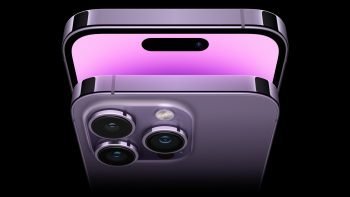
Apple’s innovative Dynamic Island is an old Android trick from 7 years ago
At Apple’s event today, the company officially took the wraps off its brand new iPhone 14 lineup, with the iPhone 14 Pro and Pro Max taking center stage with an updated design that saw Apple ditch the notch in favor of a pill-shaped camera cutout on the front.
It can be used to display indicators like when music is playing and it can even show album art. It can also show when you’re on a call, display notifications like when your ride-sharing car is on its way, and more. It is admittedly a clever use of the cutout, but Apple wasn’t the first to implement it.
Remembering the LG V10
For those unfamiliar, the LG V10 was the first in the company’s brand new V-series of smartphones and one of its key selling points was its secondary display. The secondary display was integrated into the main display of the phone and sat at the top to help create a more seamless look and design.
Unfortunately for LG, it seems that as innovative as the feature was, they might have been a bit ahead of its time as many, including us, found that the secondary display was unnecessary. To a certain extent, some might have felt that it was borderline gimmicky. It had its uses but perhaps LG’s reliance on it was kind of its downfall.
Poor implementation
With the LG V10’s secondary display, it quite literally acted as a secondary display, except that it is way smaller and a little cumbersome to use. This is because LG tried to treat it as a second smartphone display with app shortcuts and buttons which honestly felt unnecessary when you have a much larger screen below that you could easily use.
It did have its uses, like music controls and calendar reminders, but otherwise there wasn’t much need for it and it just ended up taking up a bit of screen real estate for features that not everyone may want or need to use.
Lack of developer support
Apple typically introduces iPhone features that tend to stick around for years on end, meaning that developers can create apps to support Dynamic Island without having to worry that Apple might kill it in the next one or two generations. Plus like we said, Dynamic Island is more about conveying information rather than acting as an interactive feature, so even if not all apps support it, it won’t be too big of a deal.
This is unlike the LG V10’s secondary display where it almost feels like if you do not take advantage of the feature, you would be wasting some of the phone’s potential.
Paving the way for the future
It’s easy to look back now and see how things went wrong, but we have to commend LG for taking a leap with a feature that ultimately may have provided companies like Apple with a stepping stone for features we are seeing today.